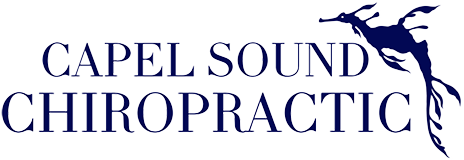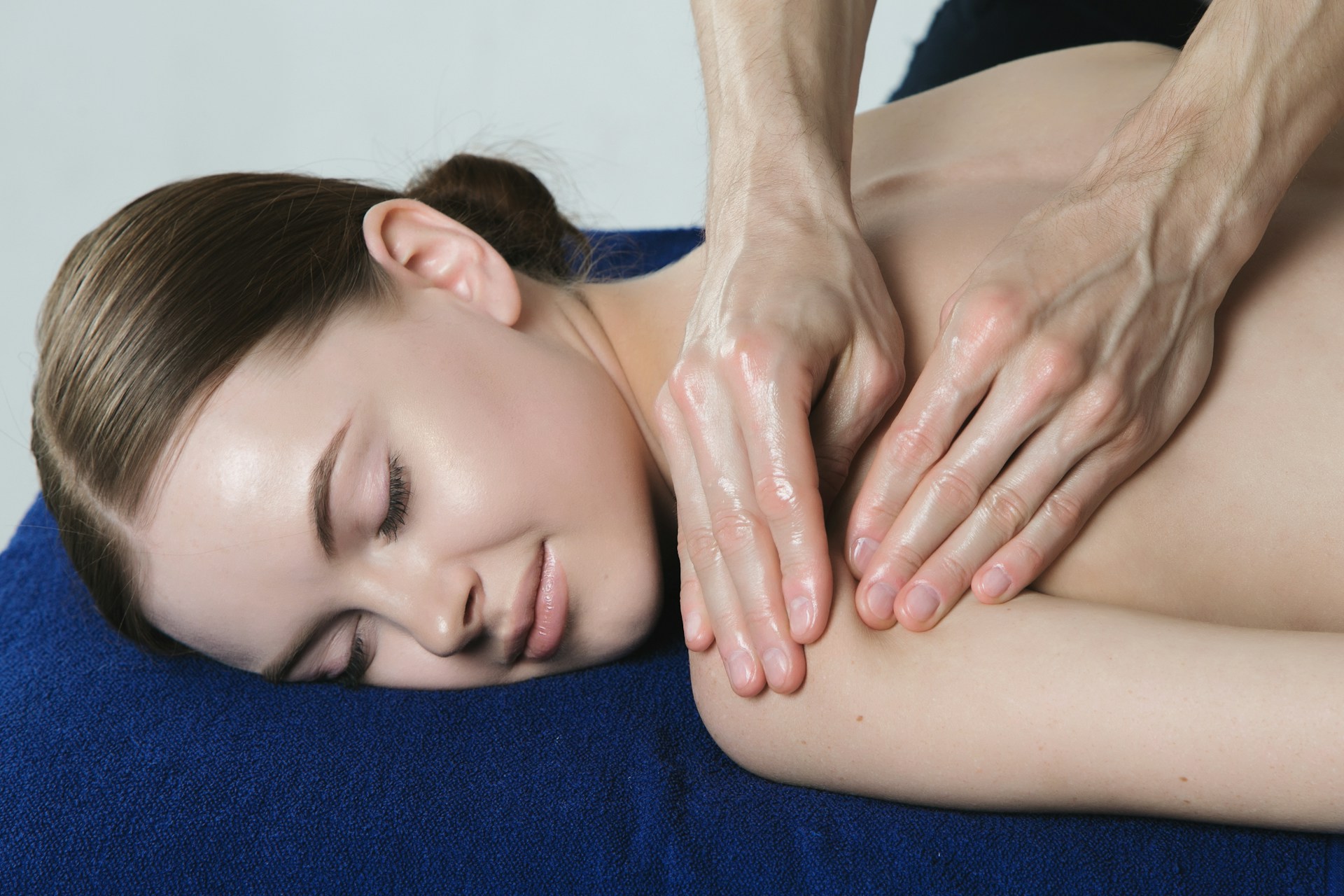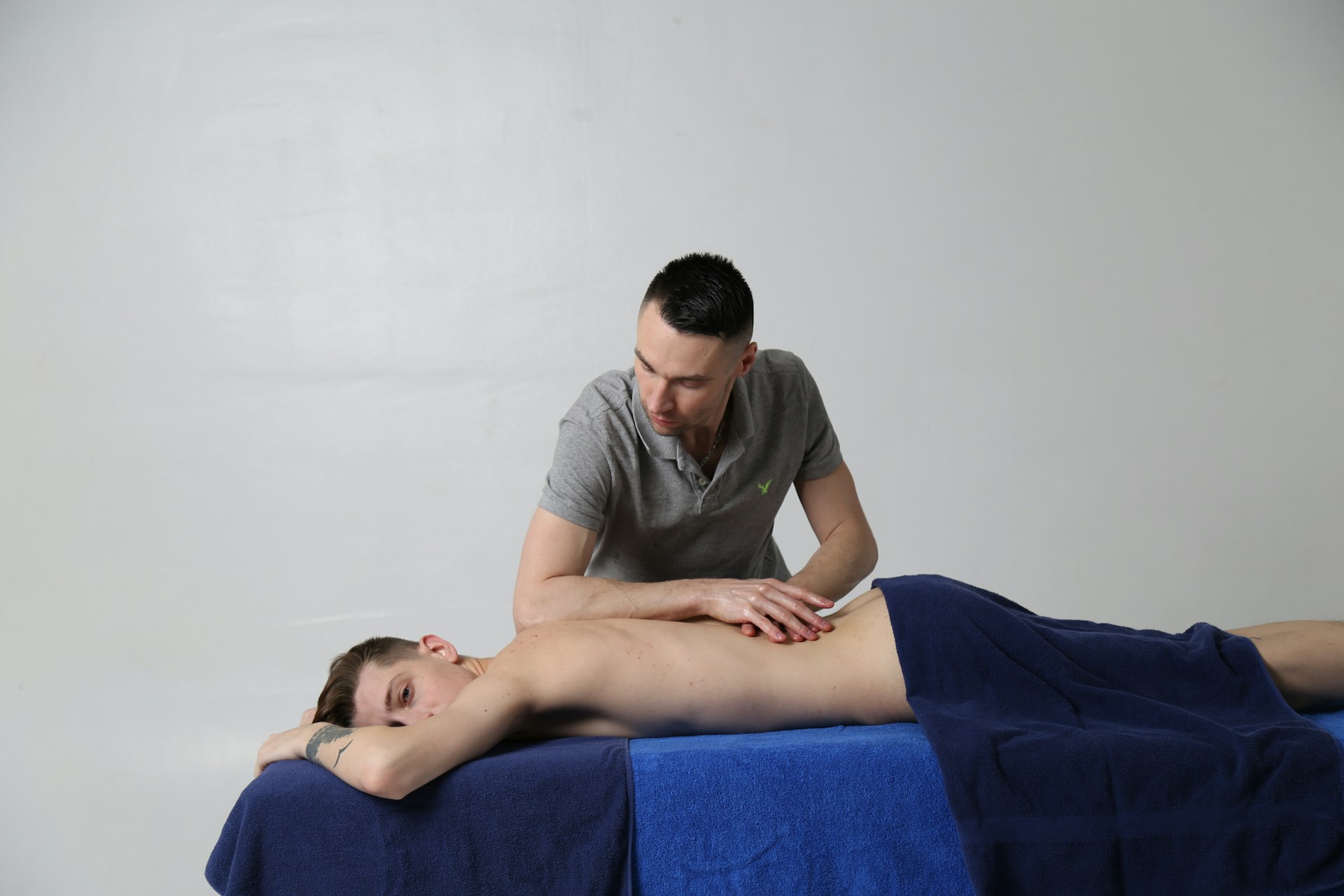Neck pain can sneak up on you. It might be a dull ache that sits in your shoulders day after day or a sharp sting that flares up when you turn your head. Some feel it after hours at their desk, while others wake up with it after a bad night’s sleep. No matter how it starts, it can slow you down brushing your hair, lifting a bag, or even just checking your blind spot. It’s frustrating and sometimes hard to pin down what’s causing it in the first place.
That’s where massage therapy comes into play. It’s more than just relaxing music and a dimly lit room. A good massage can actually help reduce pain, restore movement, and make a huge difference in how you feel each day. Different types of neck pain respond in their own way to hands-on therapy, and understanding that connection can help you choose the right support when your neck just won’t cooperate.
Common Types Of Neck Pain
Neck pain isn’t always the same. It shows up in different ways depending on what’s going on beneath the surface. Sometimes the muscles are simply tight or tired. Other times, it’s the joints or nerves causing that gripping or shooting pain. Knowing what type you’re dealing with goes a long way in getting the right kind of support and not making things worse.
Here’s a breakdown of common types of neck pain:
– Muscle-related pain: This often feels like tightness or soreness, especially after holding a position for too long. It might show up after a long drive, hunched posture, or carrying something heavy on one side. You may feel it in your neck, shoulders, or upper back.
– Joint-related pain: The small joints in your neck can get stiff or misaligned. This kind of pain is usually sharp when you move your head a certain way. It’s common as we get older or after minor injuries.
– Nerve-related pain: This is less of a dull ache and more of a burning or shooting sensation. It might travel from your neck down your arm or hand. It can be caused by a disc pressing on a nerve or inflammation nearby.
– Referred pain: Sometimes, pain in the neck is actually coming from somewhere else. TMJ (jaw) issues or problems in the upper back can send pain upwards, causing confusion about where it’s really starting.
– Acute vs long-term pain: Some neck pain lasts a day or two. Other kinds drag on for months. Figuring out how long it’s been going on can help determine the best way to treat it.
Recognising which type of pain you’re feeling can make a big difference. Trying to stretch or massage a nerve issue like you would a tight muscle might do more harm than good. That’s why it helps to chat with someone trained to tell the difference.
How Massage Therapy Works For Neck Pain
Massage therapy helps by working directly with the muscles, tissues, and joints that support your neck. When done right, it does more than feel good it encourages your body to realign, relax, and reset where things have tightened, tensed up, or stiffened over time.
Here’s what massage does at a basic level:
– Reduces muscle tension by releasing knots and built-up tightness
– Improves circulation, which helps bring more oxygen and nutrients to sore areas
– Stimulates lymph flow to move out waste and support healing
– Encourages your nervous system to calm down, reducing pain signals
– Restores range of motion and joint mobility
Muscle-related neck pain often responds well to massage because the technique targets the exact areas where tightness sits. Tight traps, strained levator scapulae, or even shortened neck flexors can contribute to tension headaches or pain down into the shoulders. A therapist who understands anatomy knows where to place their hands and how much pressure to use, especially around sensitive spots.
Massage can also provide relief for joint-related pain by gently moving the tissue around stiff joints, encouraging better motion and reducing pressure caused by swelling or poor posture.
For nerve-related pain, massage can help reduce the tight muscles that may be pressing around the irritated nerve, but care has to be taken. A proper assessment is key here, since direct pressure on inflamed nerves can backfire if it’s not handled properly.
As the cooler months roll through Melbourne, it’s not uncommon for people to feel more stiffness in their neck and upper back. Cold weather tends to make muscles tighter, especially if you stay in one position for too long or tend to brace your shoulders when temperatures drop. Massage becomes handy during this time to ease that tension and keep the body moving.
Moving forward, the type of massage used matters too. There’s no one-size-fits-all answer when it comes to neck pain and massage therapy. Different techniques offer different kinds of relief, depending on what your body needs most at the time.
Techniques Used In Professional Massage
There are several massage techniques that help with various types of neck pain. The technique that suits you best will depend on where your pain is coming from and how long it’s been bothering you. Each method has a different purpose, pressure level, and rhythm, and an experienced therapist chooses what works best based on your needs.
Here are a few commonly used massage techniques for neck pain:
– Swedish massage: Known for long, flowing strokes, this technique helps with general muscle tension. It’s gentle and works well for people with muscle tightness linked to stress, work posture, or sleep habits. It’s also helpful when you want to relax your nervous system while easing soreness.
– Deep tissue massage: This one goes deeper into the muscle layers. It’s ideal for long-term or recurring pain that doesn’t respond to light pressure. Targeting the core of tight muscle fibres, deep tissue work is useful for strain caused by physical exertion, injury, or structural imbalances.
– Trigger point therapy: Focused on specific knots or trigger points in the muscle. You might feel pain not just in the spot being touched but in other areas too. This method targets those small, stubborn spots that often lead to sharp or referred pain.
– Myofascial release: Slow and steady pressure is placed on the connective tissue (fascia). This helps with neck stiffness caused by restricted layers between muscle groups and is good for people recovering from injury or with movement difficulties.
What matters just as much as the technique is how it’s used. A trained practitioner knows what level of pressure your body can safely take and how to adjust their approach based on how your tissues respond. If the pressure feels wrong or pain increases during a session, the therapist can shift methods to something gentler. That’s why going to someone trained in professional massage matters it’s not about pushing deeper every time but doing what works best for your neck.
What To Expect During A Massage Session At Capel Sound Chiropractic
A massage session that’s designed to relieve neck pain doesn’t follow a one-size-fits-all routine. Each person’s pain is different, which means the approach should be too. A good session starts with a brief chat. This helps the therapist understand what’s going on, where the pain is located, how long it’s been there, and what might be triggering it. It’s also the time when you mention past injuries or anything else that could change the plan.
Here’s what usually happens during a tailored massage session:
1. Initial assessment: The therapist reviews your history, asks questions about your lifestyle, and may do some basic movement checks.
2. Setting session goals: Based on what they learn, they’ll set a focus for the session like releasing tense muscles, improving neck movement, or easing pain when turning your head.
3. Massage work begins: The therapist uses specific techniques based on the kind of neck pain you’re dealing with. The session may feature a mix of methods like trigger point work or long, flowing strokes for relaxation.
4. Adjustments throughout: Your feedback during the massage matters. A trained therapist listens and makes changes to pressure or focus areas when needed.
5. Wrap-up and advice: After the massage, you may get some simple advice or movement tips to help keep your neck flexible and supported through the day.
For example, someone who’s been dealing with tension from nine hours a day at a desk job might need more focus on the base of the skull and shoulders. Another person with nerve irritation may need a lighter approach and more attention to how different soft tissue layers interact. No two massage plans are the same, and that personal approach tends to make a real difference.
Why Regular Massage Can Make A Difference
Massage therapy is more than a quick fix for neck pain. Yes, a single session might help you feel looser and more comfortable, but regular treatments can support your body in staying pain-free longer-term. When your tissues are under constant stress like sitting for long periods or holding your phone to your ear your neck carries the weight. Without treatment, that tension builds over time, turning into headaches, arm pain, or limited movement.
Ongoing massage helps your body keep releasing tight areas before they become a bigger problem. It supports proper blood flow, healthy posture, and balanced muscle function. That means fewer flare-ups, better flexibility, and a wider range of motion. If you’ve found yourself dreading certain movements or fighting with the same stiffness over and over, massage might be what’s missing from your routine.
Picking a qualified practitioner who understands how to match techniques to your pain type is key. Whether it’s deep pressure for old strain or gentle touch for inflamed nerves, having someone who listens to your body and knows how to respond can drastically shift how you move through your days. Massage for neck pain doesn’t just ease what hurts it also helps your body stay ahead of future issues.
Curious about how professional massage can alleviate your discomfort? Discover more about how neck pain and massage therapy can support your journey to relief. At Capel Sound Chiropractic, we understand that every neck is unique. Our tailored approach ensures that you receive the most suitable care to address your specific concerns, helping you find the freedom to move with ease again.





